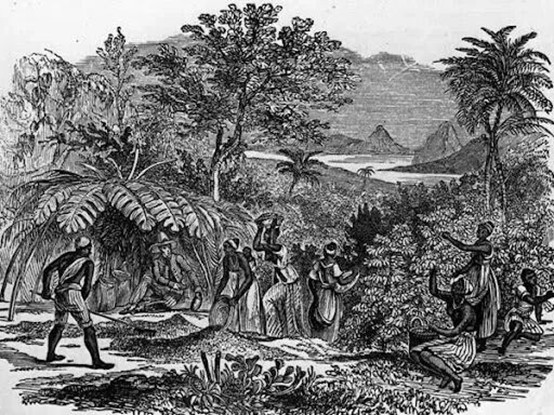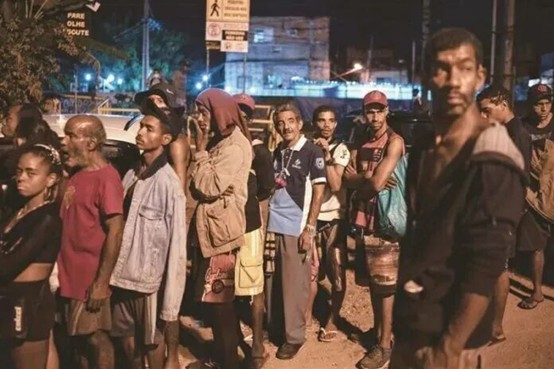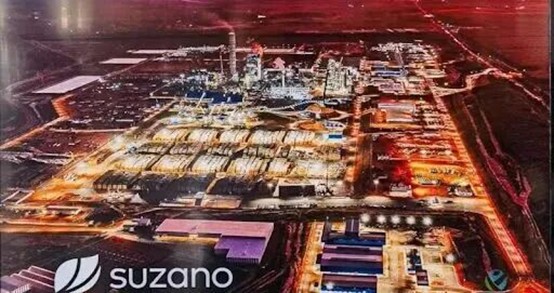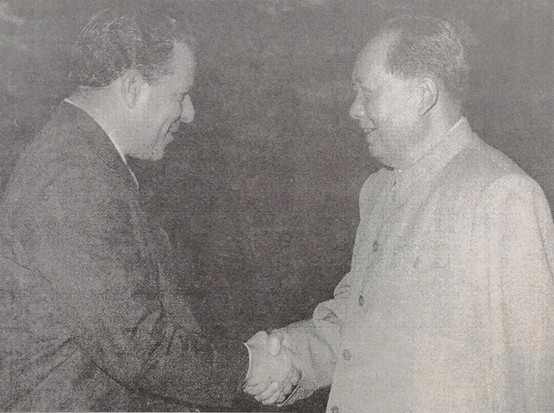Editor's Note
2025 marks the 80th anniversary of the victory of the Chinese People's War of Resistance Against Japanese Aggression, the Soviet Great Patriotic War, and the World Anti-Fascist War, and the 80th anniversary of the founding of the United Nations (UN). At this important historical juncture, to commemorate the great victory of the World Anti-Fascist War, guard against the resurgence of new fascism, address the complex issues and challenges facing the Global South amidst multipolarity, deglobalization, and the rise of new fascism, and genuinely strengthen solidarity, exchanges, and cooperation among Global South countries to jointly pursue and safeguard the post-war world order of fairness and justice centered around the UN, the “Global South Academic Forum (2025)” will be held in Shanghai on November 13–14, 2025. The theme of this forum is “The Victory of the World Anti-Fascist War and the Postwar International Order: Past and Future”.
In 2025, Brazil, a major food exporter, was once again removed from the "World Hunger Map" compiled by the UN, which signifies that Brazil’s anti-hunger struggle has again achieved phased results. However, this inevitably raises questions about Brazil’s food situation: why does a major global food exporter still have so many people suffering from hunger within its borders?
In response, Guancha (Observer Network) connected with João Pedro Stedile, leader of the Landless Rural Workers' Movement (MST), and asked him to observe the impact of this unjust world on the Brazilian economy from the Brazilian perspective and to look ahead to Brazil's path of reform.
The series of articles, "Voices of the Global South," is a collaboration between the Global South Academic Forum and Guancha, with all authors being invited guests who cooperate with the Global South Academic Forum.
Interviewers: Duan Pingyang, Tang Xiaofu from Guancha Translator: Duan Pingyang from Guancha
Guancha: As the leader of the Landless Rural Workers' Movement (MST), you undoubtedly have a profound understanding of the land issue. In the early Cold War, we saw a wave of land reforms in Third World countries, including Brazil, under the backdrop of the communist movement, but they were generally not thorough. Decades later, however, the results of Brazil’s land reform have been minimal, with most land still concentrated in the hands of a few. How do you evaluate Brazil’s land struggles over the past few decades, and how has the concentration of land exacerbated the country’s hunger problem?
João Pedro Stedile: First, I need to explain to Guancha's readers and the Chinese public that Brazil is the country that experienced the longest period of slavery in the world, a history that lasted 400 years and left a deep imprint on our society. When we emerged from slavery at the end of the 19th century, the most natural course of action would have been to distribute land to the former slaves—in fact, even the United States did this. In Brazil, however, this measure was not implemented, which led to the continuation of social inequality to this day.

Image Captions: Brazil has a history of centuries of plantation economy and 400 years of slavery.
Second, as you mentioned, in the 20th century, many countries globally saw land reform promoted by the industrial bourgeoisie because they needed to open up a domestic market for their products. Implementing land reform and distributing land to peasants would have created a massive domestic market to purchase industrial products. However, the industrial bourgeoisie only emerged in Brazil in 1930, and far from prioritizing land reform, they instead formed an alliance with large landowners. These large landowners continued to focus on exporting coffee, sugar, and beef and have, to this day, used the income from agricultural exports to finance the process of industrialization.
The ultimate result is the situation we see today: a high concentration of land ownership. On the one hand, large landowners, who only account for 1% of the rural population, control over 50% of Brazil’s land, making us the country with the second-highest land concentration globally, second only to South Africa. On the other hand, this has created an extremely unequal society. Among Brazil's over 200 million people, only about 1% are wealthy, while 90% live in poverty. Even today, in one of the world's largest food-producing countries, 60 million people still suffer from food insecurity.
Guancha: You have criticized the neoliberal economic model for exacerbating poverty and hunger in Brazil. In your view, has the Lula government’s economic policy truly reversed this trend after the Bolsonaro administration, and what structural obstacles still remain?
João Pedro Stedile: First, we need to clarify that the Lula government came to power through a broad alliance that defeated the far-right and fascists, but this victory was not based on a transformative program. We still face long-standing structural problems in the agricultural sector. The reality in Brazil shows that three competing agricultural models currently exist.
The first is the predatory latifundium (large estate) model. Large landowners ally with financial capital and specialize in plundering natural resources—they extract minerals, biodiversity resources, forests, water sources, and land to accumulate wealth, and they essentially do not engage in production. The second is the agribusiness model. Brazilian capitalist farmers form an alliance with international bulk agricultural commodity trading giants and financial capital. The third is the family farming model, where 5 million small farm families across the country rely on small plots of land to produce food for the domestic market.
Because some agribusiness forces also supported the Lula government, and the current Minister of Agriculture even comes from this group, Lula's election did not change the coexistence of these three models. Although the government has adjusted its anti-hunger agricultural policies—when Lula took office in January 2023, 30 million people in Brazil were hungry every day, and 70 million people's food security was threatened (referring to poor diet quality, reliance on ultra-processed foods, and unmet nutritional needs). Currently, the Lula government has achieved some results in distribution mechanisms and monthly relief payments, temporarily moving 30 million hungry people out of absolute hunger and into the food-insecure group, but the problem has not been truly solved.
The fundamental contradiction is that 70 million Brazilians still cannot obtain a diet that meets basic physiological needs. This problem can only be solved when we have sufficient strength to change the latifundium model and the agribusiness model. This is precisely why we continue to push for land reform—only by using land reform to defeat the latifundium system and weaken the agribusiness groups can we strengthen the family farming model based on food production.

Image Captions: Brazil has a large number of hungry people.
To give Chinese readers a typical example: in the past decade, Brazil's soybean export output has increased by 900%, but the production of the national staple foods, rice and beans, has decreased by 30%. Against the backdrop of a continuously growing population, our supply of staple foods is decreasing year after year.
Guancha: As a major agricultural exporter, people often mistakenly believe that Brazil would not face hunger. Countries that also export large amounts of agricultural products, such as India and Argentina, face similar predicaments. What do you believe is the fundamental reason for this contradiction, and how is it related to the structure of the international system? How do you view the impact of the international food market (including genetically modified crops and pesticide reliance) on Brazil's food sovereignty?
João Pedro Stedile: The use of genetically modified seeds and pesticides in Brazilian agriculture is a product of the agribusiness model. This is because the international companies that purchase soybeans are also selling genetically modified seeds and pesticides to farmers—they actually control the entire production chain, which is the essence of the agribusiness model.
This is essentially an operating model of international large capital, which bears no sense of responsibility towards the Brazilian people or the nation. The most egregious consequence of genetically modified crops and pesticides is the destruction of natural biodiversity and the disruption of climate equilibrium, leading to the climate change we are witnessing across our vast territory. While this region used to have extremely rich diversity in animals, plants, and microorganisms, under the encroachment of genetically modified crops and pesticides, only the monoculture of soybeans, cotton, and sugarcane remains, and the resulting monocropping model is causing numerous climate problems for Brazil.
This clearly also endangers food sovereignty. The vast majority of Brazil's farmland is used to produce bulk commodities for export. Ninety percent of the country’s land is planted with soybeans, corn, sugarcane, cotton, or used for cattle grazing, and all of these products ultimately flow to the international market. If we promoted the family farming model that guarantees food sovereignty, we could be cultivating more than 360 traditional vegetables to feed our people, but under the international capitalist model, these crops have been marginalized.
Therefore, it can be asserted that there is fundamentally no such thing as "Brazilian agriculture"; there is only an agricultural system in Brazil dominated by international capital. The multinational giants that control the global agricultural products market merely use our land as a tool to extract profits and accumulate wealth.
Guancha: You mentioned the current situation in which the agricultural sector is dominated by large capital. So, do you think the current Brazilian production model, based on international commodity trading, differs fundamentally from the colonial period in the 19th century (for example, the model where Argentina, Brazil, and India were forced to produce according to the colonizers' demands)?
João Pedro Stedile: This is a very profound question. Essentially, Brazil has never truly escaped its status as a colony of international capital. For four centuries, we were a Portuguese colony, whose mission was to export coffee, sugar, leather, cocoa, and minerals to Europe. After entering the 20th century, we, in a way, became a colony of the United States and have consistently failed to establish a truly economically independent national status.
This colonial nature is particularly evident in the agricultural sector. For four centuries, the plantation model adopted by international capital during the commercial capitalism and industrial capitalism periods has consistently been based on large-scale production units of export-oriented monoculture and slave labor. This model was promoted by European commercial capitalism throughout the Global South: Brazil, Latin America, African countries like South Africa, and the Southeast Asian regions controlled by Britain, France, and the Netherlands.
Today, the agribusiness model is merely a modernized version of the plantation. The only reason it is no longer called a “plantation” is the abolition of slave labor or servitude (such as indentured labor in Southeast Asia). From the perspective of production organization, capitalists simply replaced slave labor with pesticides and large machinery: they use increasingly massive modern machinery and pesticides to replace human labor. This is completely unnecessary from an agricultural technology perspective but is done to avoid hiring labor—capitalists hate paying wages and social security and fear strikes even more, while machines and pesticides never strike.

Image Captions: Brazilian artificial eucalyptus forest.
Guancha: Do you believe Brazil needs more radical reforms to solve the hunger problem, such as taxing idle land or restricting the monopolies of agribusiness giants?
João Pedro Stedile: Hunger is merely the most extreme manifestation of poverty and social inequality. The government can temporarily provide funds for poor families to buy food through economic aid, but this neither solves the problem of poverty—meaning people's inability to obtain the basic conditions for a dignified life—nor eliminates the social inequality we face.
Brazil indeed requires fundamental and profound changes, which could even be called a social revolution, much like what China experienced between 1927 and 1949. There have been multiple attempts at radical change in our nation's history: such efforts emerged in 1935, 1953, 1964, and 1989. But as the Mexicans say, Latin America is too far from God and too close to the United States. U.S. interest groups always stifle our attempts at social change, even resorting to military coups.
I believe that the solution to the structural problems of 200 million Brazilians will eventually emerge. We still have 70 million workers without formal employment, 9 million youths aged 16 to 25 who are neither employed nor in education, and 8 million adult workers who are illiterate. Change can only be fully realized through massive national mobilization. Among all the necessary changes in Brazil, the most effective way to achieve social equality in the countryside is to implement land reform that guarantees access to land and ecological agriculture for all peasant families.
Guancha: If right-wing forces regain power in the future, how should the Brazilian left-wing movement protect the existing economic reform achievements? What is your vision for Brazil's long-term strategy to eliminate hunger?
João Pedro Stedile: In the short term, the Brazilian people and left-wing forces are committed to promoting the reelection of President Lula in the October 2026 election. It must be recognized that although the right wing has temporarily lost federal power, they still control economic, judicial, and media power. If the right wing regains control of the federal government, it will likely lead to social unrest, escalating violence, and comprehensive uncertainty about future development.
Therefore, the short-term goal for us, the people's forces, is to ensure Lula's reelection to create a more favorable political environment to organize the populace and unite the working class, thus building strength for the future. We must engage in dialogue with society and mobilize the working class around a new blueprint for Brazil that we call the "People's Plan". Clearly, Brazil does not have the mature conditions for a social revolution, or a socialist revolution, in the short term.
However, we need to construct a program, a plan proposal belonging to the Brazilian people. This plan will be dedicated to eliminating social inequality and creating conditions for a future path to socialism with Brazilian characteristics.
Guancha: As a member of the BRICS Civil Society Council, do you think BRICS countries (such as China, India, and South Africa) can help Brazil alleviate the hunger problem in terms of food security, sharing agricultural technology, or trade policy?
João Pedro Stedile: As I said before, reform in the agricultural sector alone cannot solve the hunger problem, the dilemma of agricultural models, the monopoly of agribusiness, and the control of commodities by international capital that Brazil faces. This is because it is international big capital that controls the trade system, commodities, and the entire system. In our discussions at the BRICS Civil Society Council, we emphasized that the BRICS countries must promote a fundamental change in international economic relations, starting with breaking away from the hegemony of the U.S. dollar.
We must gradually abandon the U.S. dollar as the international currency; the dollar should only be the national currency of the United States. We need to establish other currency settlement mechanisms, or, as President Lula advocated at the BRICS Summit, create a new international trade currency. At the same time, we need an alternative to the SWIFT system, the financial channel controlled by the U.S. that currently dominates global capital flows.
On the other hand, the BRICS countries must break through the free trade framework imposed by the World Trade Organization (WTO). International trade should be based on new rules of cooperation between nations, allowing all countries to benefit, rather than submitting to the interests of the multinational groups that currently monopolize the global market.
The BRICS countries should also promote global concrete measures to save natural ecosystems. We urgently need a global plan (at least implemented within the Global South) to carry out large-scale afforestation. If we do not act immediately, humanity will face an existential crisis, and this is by no means an exaggeration.
Last summer, 75,000 people died from high temperatures in Europe, and 700,000 people globally have died due to climate change over the past decade. Global warming has breached the 1.5 degrees critical threshold, and scientists warn that if it rises to 3 degrees, rising sea levels will submerge many coastal cities. The majority of Brazil's population lives in dangerous coastal areas, and the climate crisis is already imminent.

Image Captions: A Brazilian town gradually being engulfed by the sea (The Wall Street Journal).
Meanwhile, the annual UN Climate Change Conference (COP30, which will be held in Brazil in November) is merely "government tourism" and a spectacle for capitalists to profit through "carbon credits". BRICS governments have a responsibility to formulate a global vegetation restoration plan to curb the global monoculture model of multinational corporations.
Finally, BRICS countries must work together to curb armed conflicts. In the current global crisis of capitalism, the military-industrial complex is shifting the crisis and initiating a new cycle of capital accumulation by instigating wars, destroying capital, and eliminating populations. This is the root cause of their incitement of the war in Ukraine, the war in Syria, the destruction of Libya, and the current sparking of conflicts in Palestine, Sudan, and Congo.
How can all this be stopped? Only through the unity of the BRICS countries. We, the Brazilian left-wing forces and the BRICS Civil Society Council, look forward to BRICS governments bravely standing up against the United States and NATO to pursue a more decisive policy to stop the wars. Only then can lives be saved, peace be defended, and true peace based on developing productive forces and meeting the basic needs of the people be achieved. Now, the U.S. is demanding that European countries allocate 5% of their GDP to military expenditure, and this insanity must be stopped.
Guancha: You mentioned the de-dollarization process. Considering previous discussions among BRICS countries and Russia's proposal for a BRICS currency last year, what kind of global financial landscape do you envision for the future?
João Pedro Stedile: This is a very complex issue and requires complex solutions, but the first step must be to promote the de-dollarization of trade in the Global South. The U.S. has always used the dollar as a tool to exploit the working people of the Global South. Every week, they use dollars to acquire land and factories in Brazil, and these dollars are merely pieces of paper arbitrarily printed by the U.S. Federal Reserve, which ultimately continue to fund the military-industrial complex through debt. Therefore, breaking the dollar's monopoly is the primary task.
The second step is to establish a new mechanism to replace SWIFT. This seems to be a quicker solution, essentially a digital banking system that does not require a very high technological threshold.
The third step is to promote the use of local currencies for all bilateral trade settlements.
I believe that countries should create a new type of currency in the future. It does not have to be in paper form, nor does it replace the national currencies of each country, but rather serves as a common reference benchmark for national currencies. These are some of the ideas we discussed in the BRICS Civil Society Council, but we are well aware that this matter is extremely complex and requires more input. I look forward to BRICS governments quickly assembling teams of economists from each country and establishing a permanent institution dedicated to studying and designing financial alternatives to the U.S. dollar.
Guancha: How do you evaluate China-Brazil cooperation in the agricultural sector (such as soybean trade)? In addition to direct trade, what other areas of cooperation can be expanded in the future, such as land policy or agricultural production?
João Pedro Stedile: First, I must point out that we are critical of the increase in soybean and pulp exports to China. We hope China can gradually achieve self-sufficiency in soybeans and develop local feed products. Currently, Brazilian soybean exports adopt the agribusiness model and are controlled by multinational corporations such as Cargill, Bunge, and ADM. Among the top five companies exporting soybeans to China, only COFCO Group is a Chinese company. Therefore, purchasing Brazilian soybeans is actually helping the international capital that controls the global soybean market, not the Brazilian people.

Image Captions: The world's largest pulp mill is in Brazil.
Similarly, the growth of pulp exports does not benefit the Brazilian people. The massive planting of eucalyptus, a single tree species, destroys biodiversity, leaving only endless eucalyptus forests on 500,000 hectares of land, which severely damages the rainfall system and climate equilibrium. To export pulp to China, Brazil built the world's largest pulp mill, controlled by a multinational corporation. We hope China can use cutting-edge technology to research and develop packaging materials that can replace pulp.
However, there is also a positive side to the issue: China can play a key role in helping the Global South eliminate poverty and achieve food sovereignty. Without technological support from China, these goals would be difficult for us to achieve.
I believe that the technological achievements China has accumulated should not be reinvented. We look forward to China promoting technology transfer, based on socialist values centered on international cooperation—which is also rooted in the genes of Chinese civilization—to help the people of the Global South meet basic needs such as food, clothing, and public transportation.
Currently, the passenger car transport model promoted by the U.S. in Brazil cannot solve the public transportation problems of Brazilian society. If China can promote high-speed rail technology to the Global South, it will bring about a fundamental change in the world. The agricultural sector also needs Chinese experience—China has about 8,000 agricultural machinery factories serving the small-scale economy, while all agricultural machinery factories in Brazil are European and American companies, producing machinery only suitable for large farms. We urgently need agricultural machinery suitable for small-scale economies of 1–10 hectares, which is a common demand across Latin America, Africa, and South Asia.
As for the ecological agriculture case I mentioned, China has a leading advantage in organic fertilizer production technology (such as using fish waste). I had the privilege of visiting a laboratory at China Agricultural University, and its technology for rapid organic fertilizer production in seven days (which naturally takes a year and a half to degrade) is a revolutionary breakthrough. In Brazil and Latin America, these resources are simply discarded.
I am full of confidence for the future and believe that China can help Brazil, Latin America, and the entire Global South achieve food sovereignty. I hope that the spirit of internationalism advocated by Mao Zedong will continue to inspire the Communist Party of China (CPC), as this is the mission of Chinese civilization—to help the people of all countries break free from capitalist exploitation.
Guancha: How do you evaluate China-Brazil cooperation in the agricultural sector (such as soybean trade)? In addition to direct trade, what other areas of cooperation can be expanded in the future, such as land policy or agricultural production?
João Pedro Stedile: I will answer the latter question first. China completed the greatest social revolution in human history, and this alone is worthy of study by the whole world. However, China's experience is only applicable to China. People in all countries should not indiscriminately copy the models of other nations but should study and learn from them. Nevertheless, scientific and technological knowledge is universal. At the current historical stage, China can help the Global South overcome development obstacles through technological cooperation (rather than imposing models). European and American companies bring technology to intensify exploitation and even eliminate job opportunities, while China adheres to Confucius's concept of "win-win cooperation". This collaborative model, based on public resource investment in scientific research, is the foundation of technological cooperation.
Recently, our Landless Rural Workers' Movement (MST) sent a letter to the Chinese Ambassador to Brazil, requesting two types of rice and wheat seeds. One is rainfed rice that can yield 7,000 kg/hectare in semi-arid regions. If these seeds are introduced to Africa and Brazil, they will end hunger. In addition, during my visit to China, I also discovered a 60-centimeter-tall miniature wheat variety with a very high yield, which can also reach 7,000 to 8,000 kg per hectare. If it can be widely adopted, it can also solve the food problem in countries that primarily consume flour-based foods. It can be said that these two varieties alone could save the world from famine.
Now let's talk about the Brazilian problem : leaders always emerge during the people's struggles. In the Brazilian people's struggles of the 20th century, Prestes, the General Secretary of the Brazilian Communist Party, emerged. I once saw the Chinese translation of his biography in China and was amazed by the breadth and depth of Chinese culture.

Image Captions: João Goulart, then Vice President of Brazil, met with Mao Zedong during his visit to China in 1961.
After him came Carlos Marighella, Brizola, and Goulart, and it is worth mentioning that Goulart visited China and met with Mao Zedong while serving as Vice President.
In recent years, Lula came into being during the struggle against neoliberalism. There are also many unknown leaders in various states.
Lula is the product of mass struggle in a specific historical period. His biggest characteristic is his humanitarian sentiment, but as he himself said, he is not a strategic thinker for social change in the traditional left-wing sense but a conciliator skilled at uniting all parties. At the end of his political career, we, the Brazilian people and left-wing forces, look forward to the emergence of new mass movements to address structural contradictions and counter U.S. imperialism. A new generation of younger and more dynamic leaders will certainly emerge in the new cycle of struggle.
The primary task of our left-wing movement currently is to ensure Lula's reelection in 2026. However, by the end of his term in 2030, we must train a new generation of fighters and prepare to launch mass struggles to promote the construction of an equal society that guarantees basic rights such as work, income, education, culture, and housing for every Brazilian.
Finally, I want to say that Oriental wisdom tells us that "seeing is believing" (literally, "hearing a hundred times is not as good as seeing once"). I once again reiterate my expectation for Chinese friends to visit Brazil for on-site observation and extend my sincere greetings.
Source: Guancha
(All images were obtained from publicly available sources.)